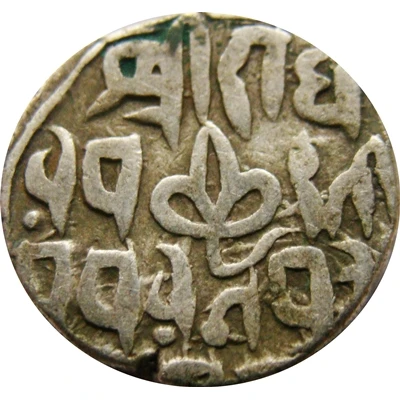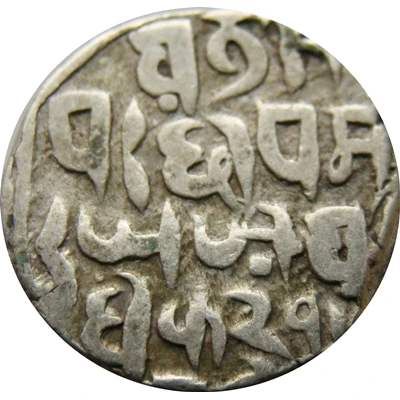![1 Rupee - Muhammad Akbar II [Jankoji Rao] (Sipri) ND (1814-1815) front](/storage/images/1-Rupee-Muhammad-Akbar-II-Jankoji-Rao-Sipri_126977_1.webp)
![1 Rupee - Muhammad Akbar II [Jankoji Rao] (Sipri) ND (1814-1815) back](/storage/images/1-Rupee-Muhammad-Akbar-II-Jankoji-Rao-Sipri_126977_2.webp)
![1 Rupee - Muhammad Akbar II [Jankoji Rao] (Sipri) ND (1814-1815) photo](/storage/images/1-Rupee-Muhammad-Akbar-II-Jankoji-Rao-Sipri_126977_1.webp)
© Parimal (CC BY-NC-SA)
1 Rupee - Muhammad Akbar II [Jankoji Rao] Sipri ND
| Silver | 10.90 g | 18.76 mm |
| Issuer | Princely state of Gwalior (Indian princely states) |
|---|---|
| Maharaja | Jankoji Rao Scindia II (1827-1843) |
| Type | Standard circulation coin |
| Years | 1814-1815 |
| Value | 1 Rupee |
| Currency | Rupee |
| Composition | Silver |
| Weight | 10.90 g |
| Diameter | 18.76 mm |
| Shape | Round |
| Demonetized | Yes |
| Updated | 2024-10-05 |
| Numista | N#126977 |
|---|---|
| Rarity index | 92% |
Reverse
Letter "Ja" for Jankoji Rao, regnal year 9
Lettering: जे
Comment
Ruler: Jankoji RaoNote: With reignal years of Muhammad Akbar II
Interesting fact
The 1 Rupee coin of Muhammad Akbar II [Jankoji Rao] (Sipri) ND (1814-1815) from the Princely state of Gwalior (Indian princely states) is notable for its unique design. The coin features a rare combination of Islamic and Hindu motifs, reflecting the cultural diversity of the region during that time. The obverse side of the coin bears the inscription "Sri Muhammad Akbar II" in Persian, while the reverse side features a depiction of Lord Ganesha, a Hindu deity, surrounded by foliage and a legend in Devanagari script. This blend of religious symbols highlights the syncretic nature of the Princely state of Gwalior and its rulers during the 19th century.
![1 Rupee - Akbar Shah II [Daulat Rao] front](/storage/images/1-Rupee-Akbar-Shah-II-Daulat-Rao_46092_1.webp)
![1 Rupee - Akbar Shah II [Daulat Rao] back](/storage/images/1-Rupee-Akbar-Shah-II-Daulat-Rao_46092_2.webp)

